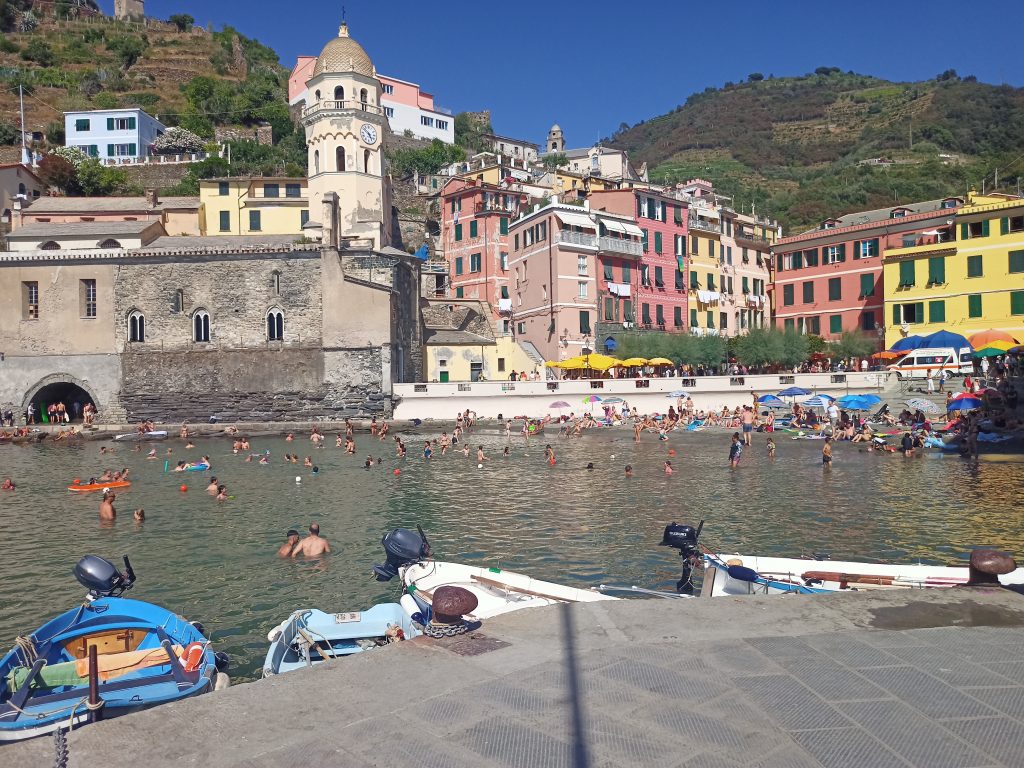I talked a little about finding your time in my 3 essential steps post, but I’d like to go into a bit more detail.
When we talk about finding your time we need to split TIME into 2 categories, one is duration the other is the time of year.
Sometimes we have no control over either of these and are limited by circumstance in which case we need to make the most of the time and the season that are given to us.
However sometimes we get to choose. Budget constraints can play a factor, not only on the duration but also on the time of year we choose to take our European trip.
What is the ideal length of time for a Europe trip itinerary?
The ideal length of time for your European trip is going to depend to some extent on what you are planning on doing and where your are planning on going. A dream trip of mine would be to spend the year wandering around Europe (and I probably still wouldn’t have time to see everything I want to see).
Being realistic, most people who need help planning their fist trip to Europe are looking for itineraries between one and three weeks.
One week in Europe Itinerary
I would suggest that one week is the minimum duration to plan a Europe trip itinerary. Any less than that and a single destination trip would be more sensible.
In one week I think the maximum number of cities one could visit properly is 3, and these three cities should be no more than 4-5 hours travel distance between them by car or rail.
I suggest 3 nights in which ever city you arrive in and 2 nights in each of the other 2 cities. An example of this can be seen in this seven day Itinerary to London, Paris and Amsterdam.
For a one week itinerary I recommend that no additional flights are taken other than getting two and from Europe. I also highly recommend booking open jaw flights, which arrive in one city and leave from another. They are often not much more expensive than a straight forward return ticket, and gain you valuable time for more exploring.
10 days in Europe Itinerary
Ten days is always going to be better than seven. If you time flights right such that you arrive on a Friday and leave the following Sunday it can often be managed without too much additional vacation time.
For a ten day European trip I still suggest sticking to three cities, adding a day to each. But you could consider one or two day trips out of the cities to see more of the countryside and small towns.
Two weeks in Europe itinerary
With fourteen nights available you could comfortable go up to 4 or 5 destinations. You could also have a short flight at the midway point. That of course doesn’t mean you have to go to more than three destinations. If there is plenty of things to see and do in an area and lots of day trips around then you may choose to have a two centre holiday, something I have done many times.
Three weeks in Europe itinerary
With three weeks to spare you could look at 6 or 7 destinations. Why not nine, which would be three times the one week itinerary? If you are going to be travelling for three weeks it is important to pace yourself otherwise you risk burning out. Travel is exciting and invigorating but it is also tiring. It is important in a three week itinerary to have one or two rest days.
You are also likely to be travelling further. It would be reasonable to take two short flights in this time, or you may choose a longer train journey which can also give you time to rest.
WHAT’S THE BEST TIME OF YEAR TO VISIT EUROPE?
When planning a trip to Europe the time of year needs to be considered as it can make a huge difference to your experience.
Things to consider when you are planning what time of year to visit Europe include:
- Weather
- Day light times
- Opening hours
- Crowds
- Events
- Wildlife and nature
- Costs
- National Holidays
Weather for a European trip
Weather is the first obvious point. Europe has very clear distinct seasons, and they will impact what you can see and do during your trip to Europe. However it should be noted that there is a wide variation in weather conditions across the continent. Winter in Nordkapp Norway , with it’s artic landscapes will look very different to winter in Malta where you would be sitting outside of cafes. Summer also has a massive variation, Seville temperatures can exceed a dry and scorching 45°C (113°F) with little rainfall, whilst Iceland rarely exceeds 15°C (59°F) with occasional rain and strong winds.

Rainfall levels can vary significantly by season, although Europe doesn’t really have a rainy season in the way tropical areas do. In Northern Europe you can expect rain all year round, more frequent in winter but places like Scotland and Iceland still experience frequent showers in summer. Southern Europe has occasional rain in winter and spring, little to no rain in summer and increased rain in Autumn (Fall).
In Eastern Europe (eg Polland, Romania, Estonia) during the winter snow dominates rather than rain. Rainfall increases in spring as the temperatures rise, summer is generally warm and dry but there is still moderate rain, rainfall then peaks in autumn especially around the mountainous areas.
In Western Europe (eg France, Germany, Netherlands) winter sees frequent rain especially in coastal regions. There is moderate rainfall in spring, often several days of rain at a time followed by several days of sunshine. Some areas, such as the UK, have variable weather conditions that can include several showers a day interspersed with bright sunshine. There are occasional strong thunderstorms. Summer is generally dry but places like the Netherlands and Belgium still see rain and areas like the Pyrenees get some thunderstorms. In Autumn (Fall) rainfall increases especially across France and Germany.
How daylight times can effect your European trip
Daylight times also vary across the continent, this is most evident in the northern countries with places like Stockholm seeing sunrise at 8:30am and sunset at 2:30pm in winter, but 18 hours of sunlight in summer with a sunset as late as 10pm. If you are mostly looking to visit indoor attractions during your trip to Europe this shouldn’t have too much effect on your plans, but if you are hiking this can make a big difference and should be considered. If you enjoy sitting outside a café in the evening sun then bear in mind the daylight saving times. The clocks go forward on the last Sunday in March so from April the evenings are much longer.

Opening hours can also be a consideration when deciding when is the best time to visit Europe. Some major attractions, such as the Puy du Fou in France and the Tivoli gardens in Copenhagen are closed to visitors in winter. Water based attractions such as boat tours and water parks are limited to the summer months. Other attractions have reduced opening times in winter, such as Prague Castle and York castle museum. This is less of a concern in the major cities such as London, Paris and Rome.
How to avoid the crowds in Europe
There’s no getting away from it, the most popular destinations in Europe are, well, popular. One of the biggest complaints one hears about travelling in Europe are the crowds, and the time of year you chose to travel can make all the difference.
This doesn’t always mean that summer is the busiest time. For example the Louvre museum in Paris has the most visitors during the Christmas school holidays. This is mostly due to domestic tourists, which account for almost half of all tourists to Paris.
The best time to avoid the crowds in Europe in gereral is November through to March, avoiding the last two weeks in December and the first week in January.
There are some other times to avoid, depending on the city, if you don’t want to experience too many crowds.
Paris – avoid 14th February (Valentine’s day)
Venice – avoid carnival time (the day before lent starts)
Amsterdam – avoid April as it’s the tulip season
Barcelona, Seville and Rome – avoid Easter
Edinburgh – avoid August due to the Edinburgh festival
Prague – avoid December due to the Christmas markets
Going to an event in europe
One of the most special things you can do during your trip to Europe is to take part in one of the many thousands of events which take place across Europe throughout the year.
These could be the basis for your entire trip so can have a big influence on when you travel to Europe.
If you are interested in outdoor music events, whether that be the heavy metal festival Hellfest in France, or the opera at Glyndebourne in England, you are going to limited to the summer months. There are few outdoor music events that take place outside of these months as rainfall is too unpredictable.
Other events, from Christmas markets (which run in general from the last week in November through to 24th December) to the carnivals in February (whose dates change with the Easter dates) take place during the normally quitter winter months.
I will be putting together a guide of events that could be of interest to visitors to Europe. If you are interested in building an itinerary around a festival or other event or are looking for ideas of events that could match up with your interests then contact us.
Wildlife and nature in Europe
If you are planning an itinerary to Europe with wildlife and nature at its heart, then you need to consider the correct time period for your European trip.
Some examples of natural spectacles include
Whale watching in the Azores – April to June
Cherry blossom avenue in Bonn, Germany – April
Lavender fields in Provence – June to July
Bird Migrations Donana national park, Spain – March to April and September to October
Aurora Borealis (Northern Lights) northern Europe – September to March

Alpine Foliage – September to November
Depending on what you want to see or do in a natural environment the season you travel is something that should be one of the first factors in your planning.
Cost of Europe Trip
Your budget is another important factor when deciding on the best time to travel to Europe. Whilst some cities such as London are less seasonal, others such as Copenhagen or Venice can see hotel costs more than half depending on the month you chose to travel.
Some concrete examples of hotel prices:
| City and hotel | Mid April | Mid July | Mid Nov | Mid Jan |
| Barcelona Cathedral hotel | 245€ | 230€ | 203€ | 127€ |
| Copenhagen NH Collection | 218€ | 370€ | 228€ | 168€ |
| Lisbon Avani Avenida de Liberdade | 164€ | 168€ | 135€ | 116€ |
| Venice Ca’Dell Arte | 536€ | 288€ | 254€ | |
| Berlin Park Plaza Wallstreet | 113€ | 104€ | 106€ | 113€ |
Prices checked May 2025
Another aspect of the change of costs throughout the year is the variation in travel costs. Flights between European cities can fluctuate in price not only with the seasons, but also with the school vacation time in the departing country. These are more difficult to tabulate over a year as the flight prices fluctuate according to demand.
An example of this is:
London to Thessaloniki by Easyjet 2nd August £240 2nd October £62
This is particularly true of flights to and from the UK. Other destinations are less dependant on seasons for their prices, perhaps due to competition from the rail network.
It should be noted that the flight schedules are subject to seasonality and the frequency of flights to mainly summer destinations such as Ibiza or Santonrini is much reduced in the winter months.
Train costs are less variable with the season, but availability can be difficult during the main vacation seasons. If you want to be spontaneous in your travel itinerary in Europe then it is best to travel outside of these times if you want to use the high speed train routes.

Why it is important to find your time
Finding your time is one of the three essential first steps to planning a European itinerary. Without considering how long you have to travel and what time of year you want to travel detailed plans and budgets cannot be fixed.
Consider your WHY when you are thinking about your TIME, the two are of course highly interlinked.
There is no perfect time to visit Europe simply because at any time of the year something in Europe is at its best, but finding your best time will help you have the most memorable visit to Europe possible.
As always we are happy to help guide you in your decision and to put together a tailor made itinerary.
